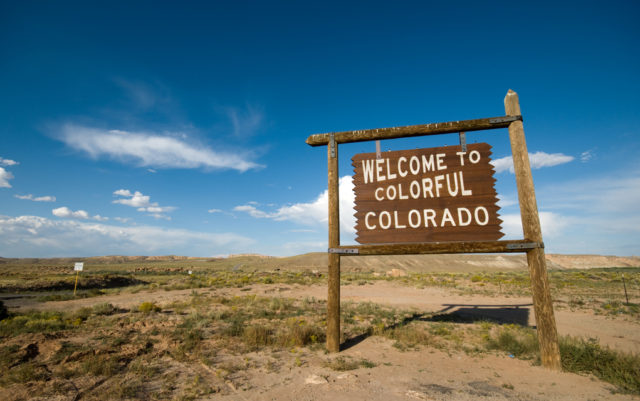
Amendment 64, the amendment to the state constitution that legalized recreational marijuana in Colorado, called for marijuana to be regulated “like alcohol.” It’s actually regulated much more stringently — save that rant for another time — with every commercially grown pot plant tracked “from seed to sale.”
The good news is this provides a trove of statistical information about marijuana production and consumption in Colorado.
Both medical and recreational marijuana are regulated by the Colorado Department of Revenue, and every year the department’s Marijuana Enforcement Division (MED) issues a report containing the data.
Here are some of the findings in the revenooers 2017 report. Warning! Statistical shitstorm follows:
• In 2017, commercial growers produced 999,022 pounds of “usable marijuana,” or nearly 500 tons. This included 612,333 pounds of recreational pot and 386,689 pounds of medical marijuana.
• More than half of the output consisted of “bud/flower,” 321,982 pounds were “shake/trim,” and 121,031 pounds were “wet whole plant.”
• Some 411,000 pounds of the bud/flower output ended up being sold to consumers. (The rest presumably was processed for concentrates and edibles.) The 411,000 pounds (6,576,000 ounces) of bud/flower works out to more than 1.5 ounces (or lids, as we used to call them) for every adult in the state.
• Speaking of edibles, there were 11.1 million “edible units” sold in Colorado in 2017. (An “edible unit” is a single serving of an edible containing up to 10 milligrams of THC.) Sales of edibles jumped by around 25 percent between January and December 2017.
• Sales of concentrates also spiked in 2017, with 4.6 million units being sold during the year. Monthly sales more than doubled, rising from 236,159 in January to 493,008 in December.
• On average, there were 121,197 more plants cultivated per month in 2017 compared to 2016, which represents a 14.6 percent annual increase in the number of plants being cultivated. During most of 2017 (from May onward), plants grown for the recreational market outnumbered plants grown for the medical market by 2-to-1.
• In 2017, Colorado’s commercial grows harvested just over 2.5 million plants. About 59 percent of the state’s usable marijuana (590,000 pounds from 1.55 million plants) was produced in Denver. The county with the second largest production was Pueblo (126,000 pounds from 208,000 plants). Boulder County was third (66,000 pounds from 182,453 plants). Pueblo grows got the most pot per plant, showing the up-side of growing outdoors (when it doesn’t hail).
• The average life cycle of a Colorado marijuana plant harvested in 2017 was 132 days, or a little short of 4.5 months. The life cycle includes three phases: immature, 24 days; vegetative, 55 days; and flowering, 53 days.
• There are commercial grow operations in 39 of Colorado’s 64 counties.
• The number of licensed dispensaries selling recreational marijuana in Colorado increased from 463 in January 2017 to 509 in December. The number of licensed dispensaries selling medical marijuana actually dropped slightly from 524 in January to 506 in December.
• The total number of licensed marijuana businesses in Colorado, including medical and recreational dispensaries, grows, product manufacturing operations and testing facilities, totaled 3,051 in December 2017, up from 2,922 in January.
• In addition to licensing marijuana businesses, the Marijuana Enforcement Division licenses the people who work in the industry, including company owners, supervisors and workers. As of December 2017, the total number of active occupational licenses in Colorado was 37,580, up from 31,256 in January 2017.
The MED may be part of the Colorado Department of Revenue, but its annual report didn’t say anything about how much revenue the state took in from taxes on marijuana sales. That number is reported elsewhere on the Department of Revenue’s website. In 2017, the state took in $247,368,473 in assorted marijuana taxes, licenses and fees. During the first four months of 2018, it took in $86,635,263.
Between February 2014 and April 2018, Colorado has raked in $725,614,042 from marijuana taxes, licenses and fees.
The MED report contained a map showing where marijuana is sold in Colorado and where the locals banned it. No county east of the I-25 corridor allows pot sales, and only a handful of towns in them do.
Only two towns along I-76, Log Lane Village and Sedgwick, allow recreational sales.
Sedgwick could put up a sign reading “Leaving Colorful Colorado. Next legal recreational marijuana Massachusetts. Obey speed limits; sales don’t begin there until July.”














